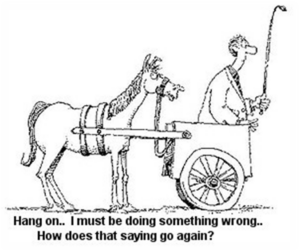3 Reasons Your Business is Not Profitable – Part 1

In this first of a two-part series of guest blogs, Bruce Baker shares with us 3 reasons your business is not profitable.
The real truth is that there is NO REASON why you should be working so hard and seeing little return from all your efforts!
I always see business owners trying to convince themselves that this is “just the way owning and running a business is.” Let’s be honest, why the heck would you put so much blood, sweat and tears into something that does not even reward or engage you?
You may have already spent money on expensive consultants, business books and online courses to figure out how to build a profitable business and still pay yourself consistently and eliminate debt. Well, if you, like many other business owners, have done this already, you’re most likely know by now that it hasn’t produced much of a result for you and your business.
What if there was a way to ensure your business is profitable and remains possible. What if this was a reality and you were still able to pay yourself and wish your debt a final farewell?
Years ago, when I started my first business, I initially fell in love with the hopes of building a company that provides immense value to the market with excellent prospects of profitability. I did indeed add tremendous value but worked 12–15-hour days, 6-7 days a week! I became unhealthy, struggled to pay the bills, and dealt with uncontrollable debt.
All this with ZERO quality of life, GUILT from not spending time with my family…the list goes on! This made me realize that it had nothing to do with how much or how little money my business produced but how I was thinking about money and the time I was using to manage it. This led me to the system I called Time and Financial Repurposing (TFR), a complete game-changer for my business, clients, and hopefully for you!
*Repurpose: “to use something for a different purpose to the one for which it was originally intended.”
Stop wasting your time on traditional, outdated methods that get you little if any results! It’s time for you to take advantage of a system that is not new but is uniquely you and is as natural as breathing. TFR will transform how you use your time and money, ensuring your business is profitable!
I share the TFR system with business owners in my FREE group – Profitable Business Owners
ELIMINATE THE 3-REASONS YOUR BUSINESS IS NOT PROFITABLE:
1. Controlling money (the outcome) and not actions (the reason money exists).
2. Not being clear how money moves in and out of the business.
3. Trying to change who we are vs. leveraging what comes naturally to us.
REASON #1:
Controlling Money – Not Actions
Human beings are focused on the end result versus what and how their actions impact the outcome.
The pattern is ALWAYS the same. Business owners gauge their success with what ends up in the “bank.” How many times have you thought to yourself how hard you work, only to have to deal with this…look familiar?

So, where does this leave you? Disengaged and deflated!
Remember, the only reason your business produces “money” is through the decisions you make and the actions you take…that is it! We spend a ton of energy (in many cases negative energy) stressing about the money (the outcome) versus the actions and decisions (the driver) that produce money (the outcome) in the first place!

As one CEO and client of mine once commented, “I avoided looking at my bank account for a month and mysteriously ended up with a positive bank balance for the first time in over 3-years”.
Magic, alchemy? Not at all! Simply put, she moved herself to flip her focus from money to action. It was a challenge for her, but the success blew your mind!
Work through the following exercise to start eliminating Reason #1
#1: List all the actions and decisions you have taken in the last 4-weeks and identify which decisions were directly related to generating revenue.
#2: Identify which decision led to successful results (no matter how small) and which decisions did not lead to any results.
#3: List the reasons you defined the outcome as either successful or unsuccessful and what you will do the next time differently.
The purpose of this exercise is not to analyze your financials, but your behaviour(s) based on how you interpret a situation. Doing this, highlights how your emotional response(s) to a particular situation leads you to the decisions and actions you take and the outcome (money).
If you are noticing connections between your behaviours and the money outcome, move to the second reason which we will post next week.
Did you enjoy this blog? Read more great blog posts here.
For our course lists, please click here.











